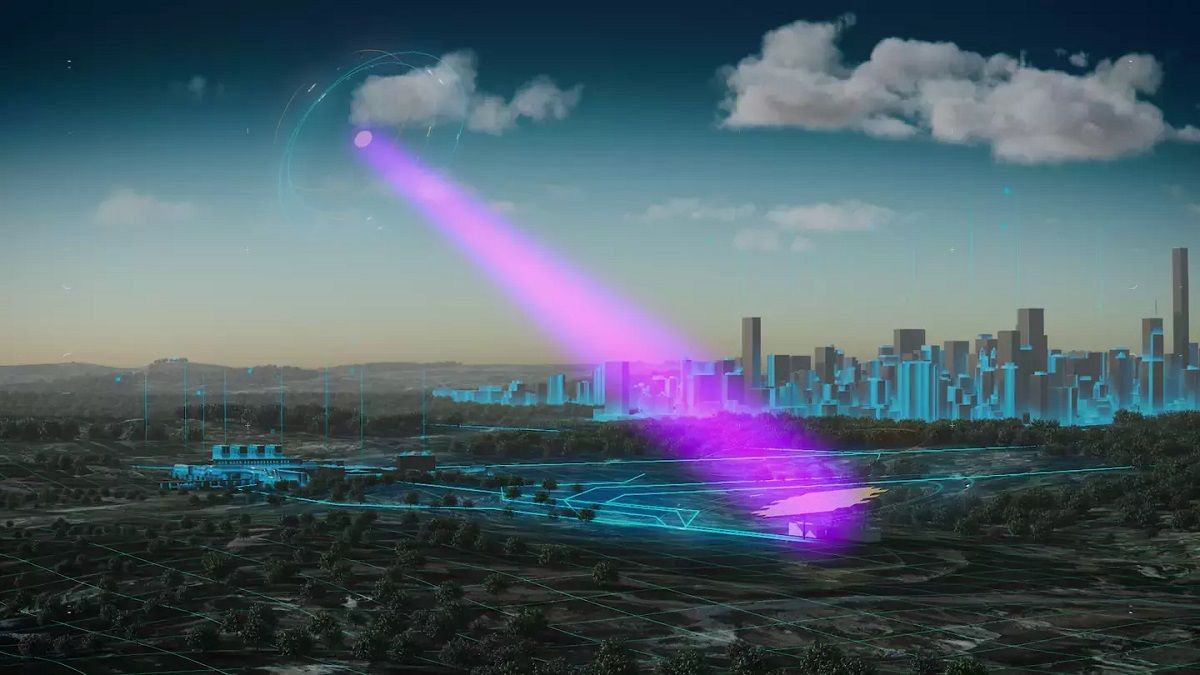
www.space.com
Space-based solar power could really work, experiment shows
European aerospace giant Airbus demonstrated how solar power could be beamed from space in a new experiment.
Science & Tech
European aerospace giant Airbus demonstrated how solar power could be beamed from space in a new experiment.
So far, the wireless transmission system has only bridged the distance of a little over 100 feet (30 meters), but engineers are confident they can increase its range to reach all the way to space within the next decade.
The demonstration, which took place at Airbus' X-Works Innovation Factory in Germany in September, saw electrical power transmitted from a photovoltaic panel in the form of microwaves to a receiver some 118 feet (36 m) away. The beamed energy lit up a model city and powered a hydrogen generator and a fridge containing alcohol-free beer that the audience later enjoyed.
Even though it might seem as a long way to go from 118 feet to Earth's orbit, Airbus engineers believe that "the first operating Power Beaming prototypes could be in use" by the early 2030s.
"Now that we have successfully tested the key bricks of a future space-based solar power system on a small scale for the first time, we are now ready to take power beaming to the next level," Yoann Thueux, the Airbus research project leader, said in a statement.
Airbus will likely first attempt to beam solar power from an aerial platform before aiming for space. Ultimately, solar power harvested in space and beamed to aircraft could revolutionize aviation, the company thinks. Flying aircraft could also serve as mobile nodes transmitting the power wherever else it might be needed on Earth.
"This could in fact be a game changer for aircraft, with the potential to extend the range, reduce the weight, but also to relay power to other places, managing energy like data," Jean-Dominique Coste, a senior manager at Airbus' Blue Sky department, which develops innovative technologies, said in the statement.
Space-based solar power could also help wean the world off fossil fuels and contribute to a zero carbon future in line with calls of the international climate science community. Scientists believe that in order to prevent the planet from warming on average by more than 1.5 degrees Celsius (2.7 degrees Fahrenheit), the global economy would have to be fully decarbonized by 2050. However, this goal is still not within reach, according to a recent United Nations report on climate change.
"Power beaming technologies would enable the creation of new energy networks in the sky and could help solve the energy problem," Coste said. "They would enable countries to fully control and distribute their energy where needed, independently."
Solar power energy generation is much more efficient in space than on Earth's surface, where clouds and the day-night cycle prevent achieving maximum illumination. In fact, solar radiation is 50% more intense in space, where no air stands in the way of the rays. However, the technology is not without its drawbacks.
"If satellites were to collect the sunlight, they would need to measure about 2 kilometers [1.2 miles] across to achieve the same power level as a nuclear power plant," Thueux said.
And nothing of that size has ever flown in space. The largest space-borne structure ever assembled in orbit is the International Space Station, which is about the size of a football field.
Coste said that the microwave beams that carry harvested solar energy "can be designed to prevent harm" to technology as well as living creatures. He sees further advantages of the system in its ability to distribute power all over the world without the need for any further ground-based infrastructure.
"There is no need for complex and costly ground infrastructure, power plants, pipelines or cables, for example, to distribute the electricity on Earth," Coste said. "That, too, is done by power beaming."
The system would not be more expensive than conventional ground-based power generation infrastructure, such as nuclear power plants or large-scale solar or wind farms, according to Airbus.
Considered the realm of science fiction until recently, space-based solar power has been gaining more prominence lately with the world's leading space agencies launching development projects and feasibility studies that could lead to the first space-based energy harvesters flying in the next decade.
The space agencies admit that advances in several areas, including robotics and in-orbit manufacturing, would be needed to make space-based solar power visions a reality.
























































